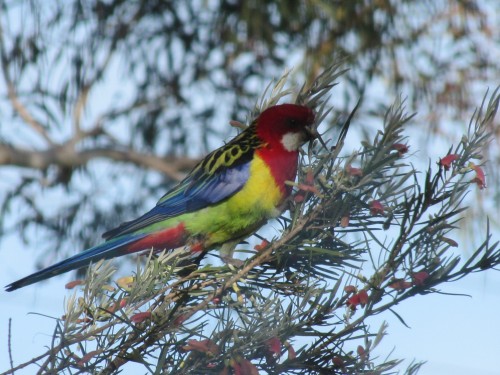A small birding accident
This morning I had a small birding accident. I didn’t hurt myself – or anyone or anything else. This week the forecast is for severe hot weather after a prolonged period of mild weather, so I decided before breakfast that our bird baths should be replenished every morning. The resident birds sure appreciate the fresh water every day.
I filled a handy bucket from the rainwater tap – I prefer to treat them to rainwater rather than tap water – and trundled outside into the garden. As I carried the very full bucket of water I stepped off the veranda and… disaster! The cheap plastic bucket shattered into about a dozen pieces and water splashed all over my shoes, socks, and legs. The bucket – what was left of it – was immediately thrown in the rubbish bin and another one fetched and filled from the tap over the laundry tub. This time the water reached its destination without further incident.
My efforts were rewarded about an hour later. While reading the paper at the table in our sun room two birds flew in to have a drink and a bath. One was a Mallee Ringneck and the other an Eastern Rosella (see photo above) Strangely, these two birds have been seen together in our garden on many occasions over the last few years. Eastern rosellas are not common in this area.
Further reading:
Even more Superb Fairy-wrens
A few days ago I wrote excitedly about the increase in Superb Fairy-wrens in our garden. The numbers have risen steadily in recent years. At first we only had two, a male and a female. Later this became three, then four and soon five.
Now I have counted SIX individuals. Two days ago they all came hopping along through our garden, feeding as they came. Most of them stopped for a drink at the bird bath, and several had a quick dip. I did a quick count – and a recount to be sure. Yes – there were six of them, one in male plumage and the rest were the plain brown of the females or young males. I can never work out the different between the females and the young males.
I have observed that several of them are displaying begging behaviour, so it seems that a number of the uncoloured birds are actually recently fledged. That’s good news; it proves successful recent breeding attempts. It also bodes well for the future of this small but steadily growing population. They are quite the lovely little family group, adding much colour and character to our garden.
Further reading:
